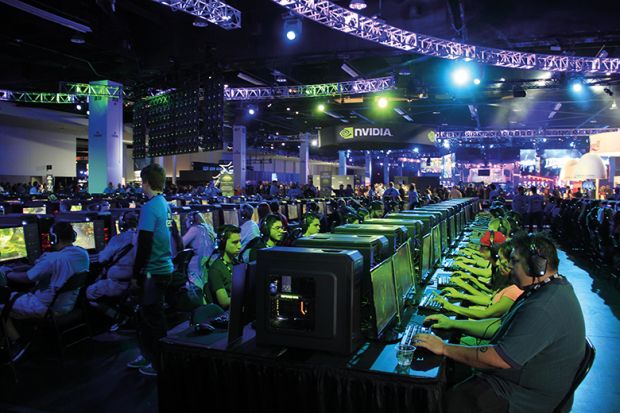The University of California at Berkeley is starting a new college of computer and data science, in what it expects might become a nationwide model for coping with the field’s surging and often unmet demand.
UC Berkeley, like many US campuses, has been overpowered by the rapid rise in interest in computing in recent years, with huge increases in graduate numbers without the staff and infrastructure to go with it.
California’s flagship public institution sees the creation of the College of Computing, Data Science, and Society – UC Berkeley’s first new college in more than 50 years – as a way of helping the campus cope by consolidating the deluge of demand and then better allocating it.
A key step will be tackling the data-science element via partnerships with faculty in other fields, said John DeNero, the associate dean of undergraduate studies at the new computing college. These scholars might not teach computer programming, but have enough expertise in the computer-related aspects of their own specialities to teach courses about data usage, he explained.
“Data science fundamentally is more scalable on the Berkeley campus because it involves faculty from all over, instead of mostly faculty from one department,” Dr DeNero said. “Part of the plan, to make sure that computing is accessible to the broad set of people that want it, is to make sure that data science and computer science together have a lot of capacity, as opposed to just putting it all in computer science.”
Overall, the challenge facing UC Berkeley and US universities looks imposing. The average number of students in computer science fields nationwide has increased by more than six times its 2006 level, according to the latest annual compilation by the Computing Research Association (CRA).
UC Berkeley has nearly 2,000 graduates a year in computer science and data science, up from just 200 a decade ago, and now representing almost a quarter of the university’s total undergraduate degrees. Data science accounts for close to half of those 2,000 graduates, after holding virtually no share just five years ago.
CRA said that, since this nationwide enrolment surge began nearly 20 years ago, the number of US teaching faculty in computer science fields had grown at only about half the rate of the growth in the number of students, and the number of tenure-track faculty had grown by only about one-tenth the rate of enrolment growth.
“The undergraduate population continues to grow, but there’s a smaller growth in teaching resources,” said Elizabeth Bizot, a senior research associate at the CRA.
UC Berkeley sets norms often followed at other institutions, and the consolidation of its computer-science fields into a new college is not the only step it is taking. After much internal debate, Dr DeNero said, UC Berkeley was also changing the two main ways that students get admitted as computer-science majors.
Those who get accepted into computer science as part of their admission to the university will now be guaranteed a space, starting this coming academic year, ending a system by which they had to meet a grade-point-average threshold during a set of initial courses. And for those students who try to switch into the computer-science major after their acceptance to the university, the opportunity will be allowed only in the sophomore year, and the decision will be based on a “holistic” assessment rather than a pure GPA-driven metric, Dr DeNero said.
Those changes, combined with the recruitment of faculty from other majors to teach data-science courses, should help keep enrolment growth steady within the major, or even reduce it a bit, he said.
Such balancing efforts in higher education can be difficult and raise the potential for antagonisms with faculty outside computer science, said Maria Klawe, the retiring president of Harvey Mudd College.
Harvey Mudd is a private liberal arts college in California with a focus on science and engineering. It graduates about 200 students a year and those in computer science now account for about half, up from only about 25 such students a decade ago.
Dr Klawe has been trying to meet that flood of demand by expanding the overall size of Harvey Mudd, from about 800 students to 900, so that it could hire 10 more faculty, almost all of whom went into computer science. Ending a 17-year term as president, she said that loomed as “the most controversial thing I did while I was here”.
The faculty had to understand, however, that the alternative would have been to meet the student demand for computer-science majors by not replacing departing faculty in such fields as engineering, physics, biology and chemistry, “where the number of majors has gone down significantly”, Dr Klawe said.
“And politically, that would be even worse than increasing the size of the college,” she said.
Dr DeNero faces some similar realities. Even with the changes at UC Berkeley, some people would be disappointed, he said. “There will still be students who would like to major in computer science but can’t,” Dr DeNero said, “because there is a capacity challenge.”
Register to continue
Why register?
- Registration is free and only takes a moment
- Once registered, you can read 3 articles a month
- Sign up for our newsletter
Subscribe
Or subscribe for unlimited access to:
- Unlimited access to news, views, insights & reviews
- Digital editions
- Digital access to THE’s university and college rankings analysis
Already registered or a current subscriber? Login








